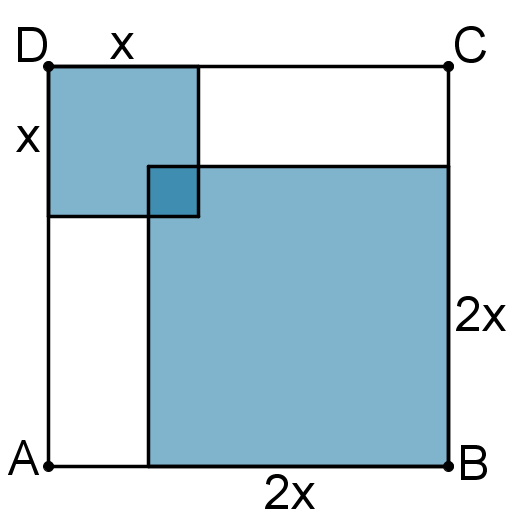Or search by topic
Number and algebra
Geometry and measure
Probability and statistics
Working mathematically
Advanced mathematics
For younger learners
Four Square



- Problem
- Solutions

The large square has area $196 = 14^2$, so it has side-length $14$.
The ratio of the areas of the inner squares is $4 : 1$, so the ratio of their side-lengths is $2 : 1$.
Let the side-length of the larger inner square be $2x$, so that of the smaller is $x$.
The figure is symmetric about the diagonal AC and so the overlap of the two inner squares is also a square which therefore has side-length $1$.
Thus the vertical height can be written as $x + 2x - 1$.
Hence $3x - 1 = 14$ and so $x = 5$.
So the small shaded square has an area of $25$ and the large shaded square has an area of $100$.
Therefore, the total shaded area = $25 + 100 - 1 = 124$
Note also that the two unshaded rectangles have side-lengths of $14 - 2x$ and $14 - x $; that is $4$ and $9$.
So the total unshaded area is $36 \times 2 = 72$, and therefore the total shaded area is $196-72=124$
You may also like
Consecutive Numbers
An investigation involving adding and subtracting sets of consecutive numbers. Lots to find out, lots to explore.
Days and Dates
Investigate how you can work out what day of the week your birthday will be on next year, and the year after...

